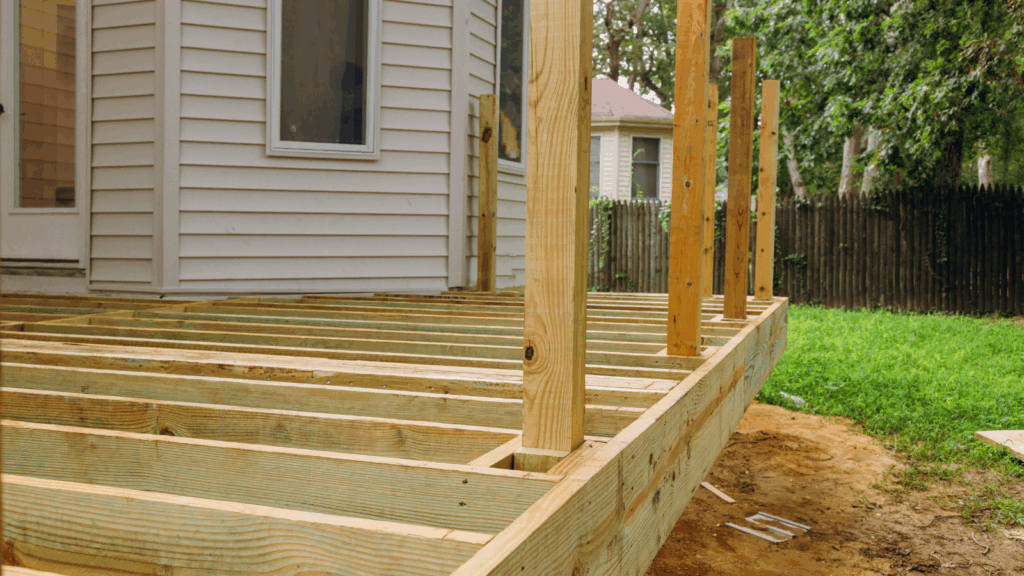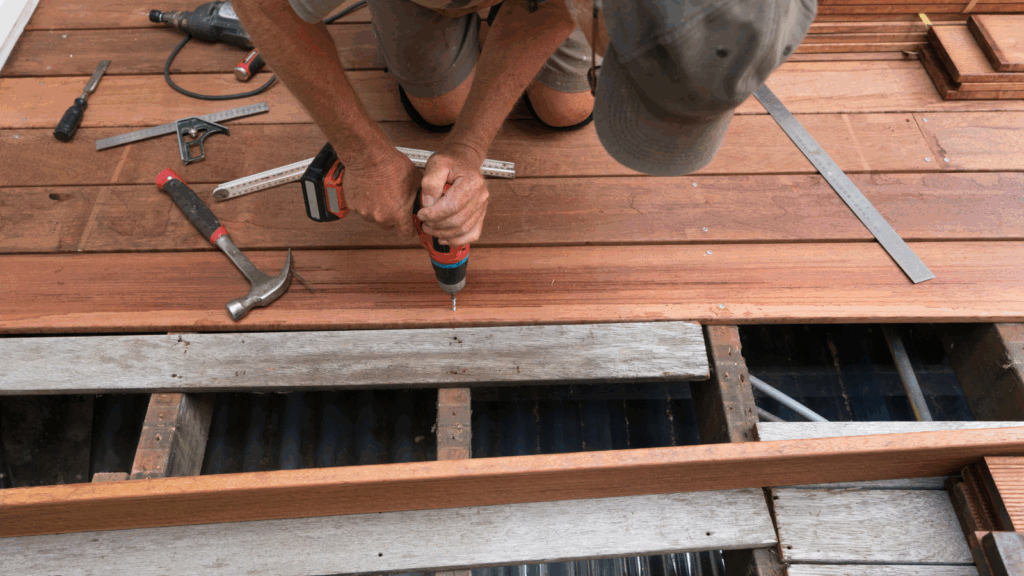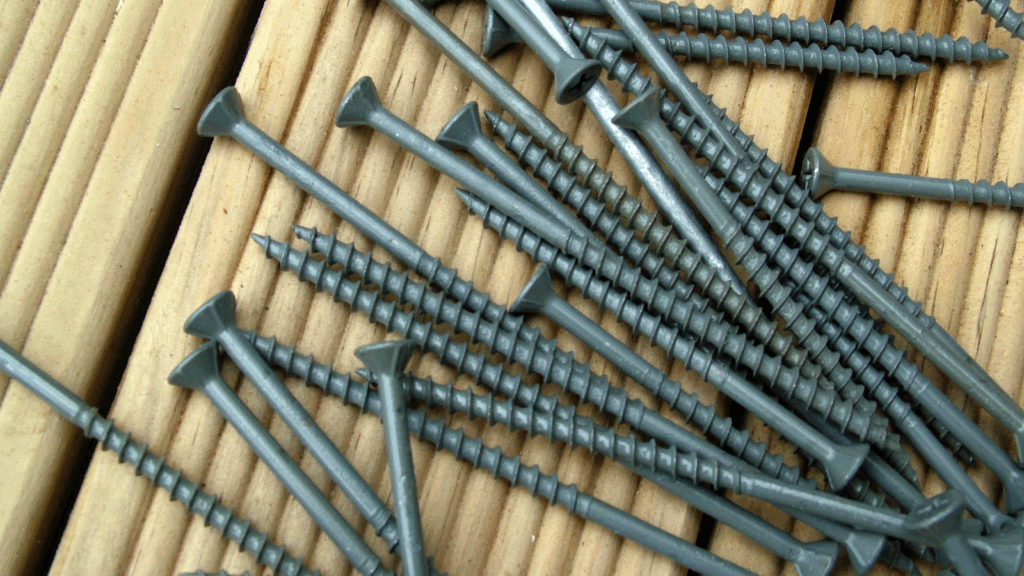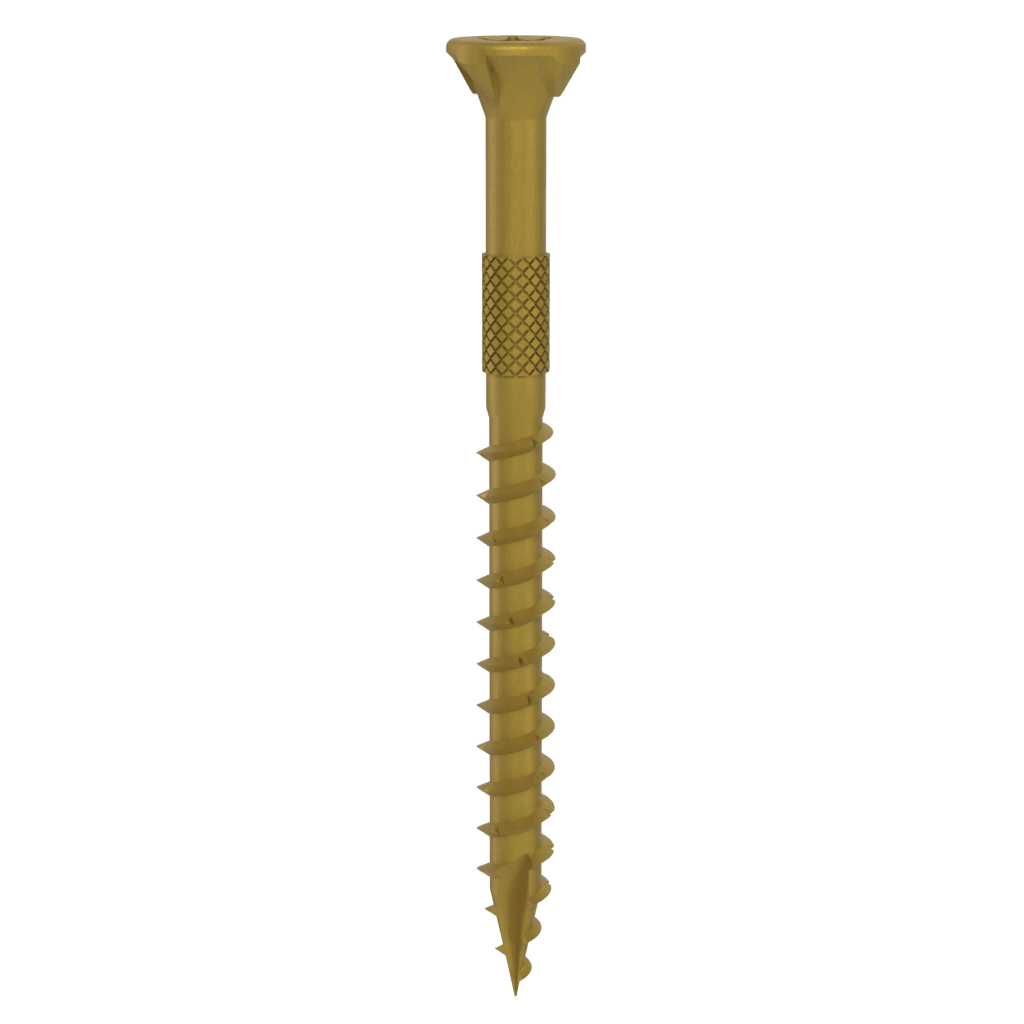
When high winds are forecasted, wind load forces are often the last worry for most homeowners. However, every storm season, decks across hurricane-prone areas face tremendous uplift and lateral forces that can turn deck boards into sails, ripping them away from joists and creating dangerous projectiles.
Inspectors often attribute poor connections between joists and ledger boards as the primary cause of catastrophic failures. That said, fasteners play a significant role in the structural integrity of a deck.
For homeowners seeking a more hurricane-resistant deck, selecting fasteners specifically designed for high-wind areas is crucial. In this guide, we’ll break down what makes a deck fastener hurricane-resistant, focusing on three key specifications: length, thread design, and gauge.

Understanding wind load failure starts with understanding the forces at work. When high winds sweep across a deck surface, they create significant uplift. Deck boards, with their large surface area and gaps, essentially act like a wing.
As wind rushes over the top surface faster than it moves through the gaps below, pressure differentials create powerful upward forces trying to peel boards away from their joists.
Fasteners fail in three primary ways during these events.
Building codes in high-wind regions emphasize proper fastening for good reason, with structural engineers estimating uplift forces on typical decks at around 200 pounds per joist in most of the United States.
The difference between a deck that survives a hurricane and one that becomes airborne debris often comes down to the selection and quality of fasteners.

Generally speaking, the deeper a fastener penetrates the substrate, the more withdrawal resistance it provides. It’s simple physics—more threads engaged in solid wood means more force required to pull that fastener out.
For deck-to-joist connections, best practice recommends screws that penetrate through the deck board and extend at least 1” to 1.5” into the joist below. To achieve proper embedment through 1” or 2” deck boards, fasteners must be 2.5” to 3” long.
Grip-Rite DeckForce® Exterior Wood Screws are available in lengths up to 3″, specifically engineered for this application. Shorter screws might seem sufficient, but they sacrifice critical embedment depth. In uplift scenarios, even an extra half-inch of thread engagement can be the difference between a fastener that holds and one that fails.

A screw’s thread design directly impacts how aggressively it bites into wood fibers and how much surface area it engages—both critical factors in withdrawal resistance.
Deep, aggressive threads, like those in DeckForce exterior screws, create a stronger mechanical interlock with the wood structure. The dual-thread designs and auger-style points pull the screw into the material more quickly, resulting in a tighter fit. This reduces splitting (which weakens the connection) and improves overall grip.
DeckForce Exterior Wood screws feature dual-action auger threads designed to optimize performance across the most common decking materials. This thread geometry provides aggressive bite for faster installation while maximizing holding power—exactly what you need when you’re installing hundreds of fasteners and can’t compromise on either speed or strength.
DeckForce® Exterior Composite Screws feature design elements tailored to manufactured decking materials. A smaller undercut head provides ample wind load resistance and high-low threads grip composite and PVC deck boards.
Gauge measures the diameter of the screw shaft, and a thicker screw provides greater shear and pull-out resistance than a thinner fastener.
Equally important is head size. A larger head distributes the clamping force over a larger surface area, which means a lower likelihood of pull-through failure. In softer materials or weathered wood, a screw with an undersized head can tear right through the board surface under wind uplift forces.
DeckForce screws feature superior construction with star drive and heads engineered to seat flush and secure. The star drive configuration provides superior bit engagement compared to Phillips drives, reducing cam-out during installation and allowing you to achieve proper torque without stripping the head.
Even the best fastener can fail if it corrodes. In humid, coastal environments—exactly where hurricane risk is highest—corrosion protection isn’t optional.
High-quality coatings, such as PrimeGuard Nano found on DeckForce screws, create a barrier against moisture, salt spray, and the corrosive chemicals in pressure-treated lumber. This protection ensures the fastener maintains its structural integrity year after year. For coastal regions, only use Grip-Rite PrimeGuard MAX® stainless steel screws for unmatched corrosion resistance and performance.
Read more about Grip-Rite exterior screw coatings and materials here.
Installation technique matters just as much as the selection of fasteners. Overdriving screws—sinking them too deep into the deck board—compromises the connection by crushing wood fibers and reducing the head’s bearing surface. Alternatively, screws left proud (sticking up) create tripping hazards and don’t provide adequate clamping force.
The goal is flush seating: the head should sit level with or just barely below the deck surface.
Spacing and pattern are the final pieces of the puzzle. Code requirements typically call for two fasteners per joist crossing, positioned about 3/4″ from the edge of the board. This spacing provides redundancy—if one fastener begins to fail, its neighbor continues holding.
In high-wind zones, some engineers specify additional fasteners at the board ends or reduced spacing along exposed edges, where uplift forces are concentrated.
When you’re bidding a deck job in a hurricane-prone area, use this checklist to ensure your fastener specification meets the challenge:
Verify that your installation meets local code requirements, which may specify additional fasteners or particular patterns in high-wind zones. DeckForce Exterior Wood Screws check all these boxes, providing a code-compliant solution that delivers professional-grade performance.
When the next hurricane spins up in the Atlantic, the quality of your deck fasteners will be put to the test. Uplift resistance isn’t magic—it’s engineering. It comes down to three measurable specifications: sufficient length to achieve deep embedment, thread design that maximizes grip, and adequate gauge for structural strength. Add proper corrosion protection and correct installation, and you’ve built a deck that will weather the storm.
Quality fasteners aren’t an expense—they’re insurance. For a few dollars more per hundred screws, you’re buying peace of mind and protecting your reputation.
The best time to upgrade to hurricane-resistant fasteners, such as DeckForce, is before storm season, not after. Your clients will thank you when their deck is one of the few still standing after the winds die down.
Find out Where to Buy Grip-Rite DeckForce® near you.